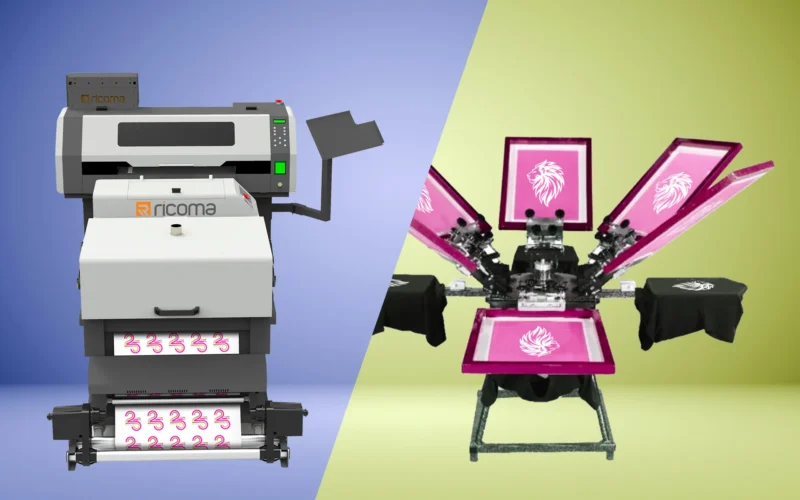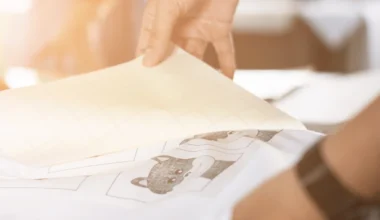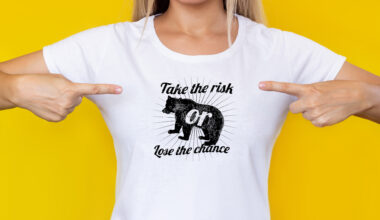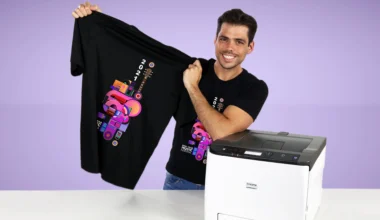If you’re in the apparel printing industry (or considering diving into this world), you’ve probably heard the buzz of direct-to-film (DTF) vs screen printing. But what’s the real difference between these two methods, and why should you care?
DTF vs. Screen Print: Understanding Screen Printing
What is Screen Printing?
When comparing screen print vs DTF, it’s important to note that screen printing works by pushing ink through a mesh screen onto your fabric, while DTF (direct-to-film printing) uses a film transfer method.
This method has been a staple in the printing industry for ages, intended for business owners who need to create lots of bulk orders in little time.
The Screen Printing Process
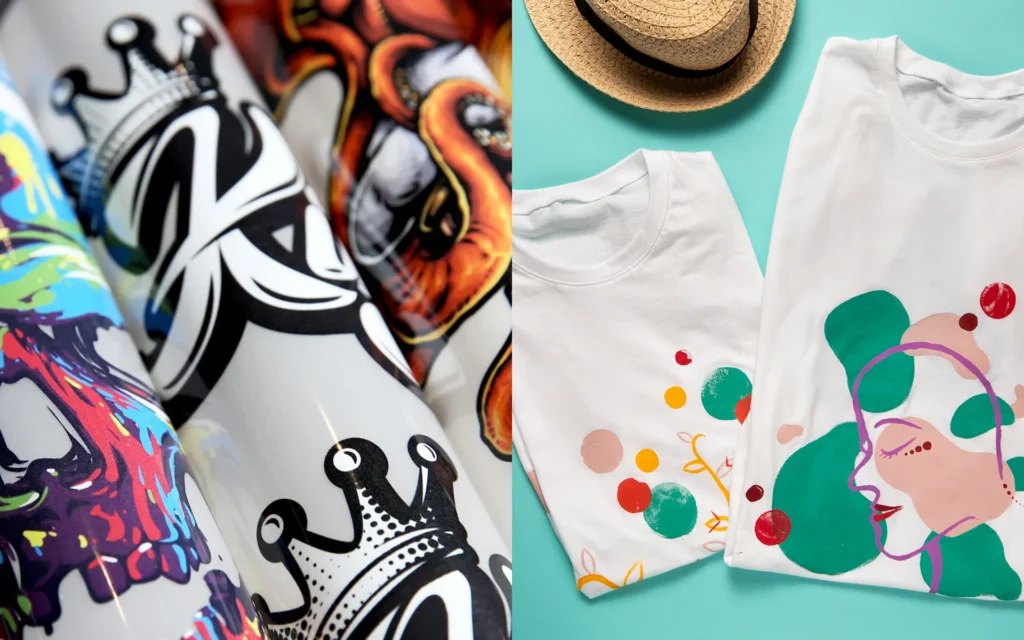
First things first, we need to create our screens. This involves stretching a fine mesh material over a frame (kind of like a window screen, but way fancier).
Then, we apply a light-sensitive emulsion to the screen. This is where the design comes in – we place our artwork on the screen and expose it to light. The areas hit by light harden, while the dark areas (our design) wash away, leaving us with a stencil.
We place the screen onto our fabric and use a squeegee to push ink through the open areas of the stencil. It’s a bit like frosting a cake, but instead of delicious icing, we’re using vibrant ink. Each color in your design needs its own screen, so for multi-color designs, we repeat this process with different screens and colors.
After printing, the ink needs to be cured. This is usually done with a big, fancy dryer that sets the ink and makes sure it’ll stay put through countless washes.
As for equipment, you’ll need screens, inks, a press (manual or automatic), squeegees, and a curing unit. It might seem like a lot, but once you get the hang of it, you’ll be churning out professional-looking prints in no time!
Limitations of Screen Printing
There are many limits to screen printing, which is why we don’t recommend it for our community. Remember how we said each color needs its own screen? Well, that can get tricky (and expensive) when you’re working with complex, colorful designs.
When comparing screen print transfers vs DTF, it’s worth noting that screen printing can be limited in fabric compatibility, while DTF offers greater versatility across various materials, including synthetics and stretchy fabrics.
Plus, creating new screens for each design takes time and money. If you’re constantly changing up your designs or need quick turnarounds, this setup time can be a real stumbling block.
Exploring DTF (Direct-to-Film) Printing
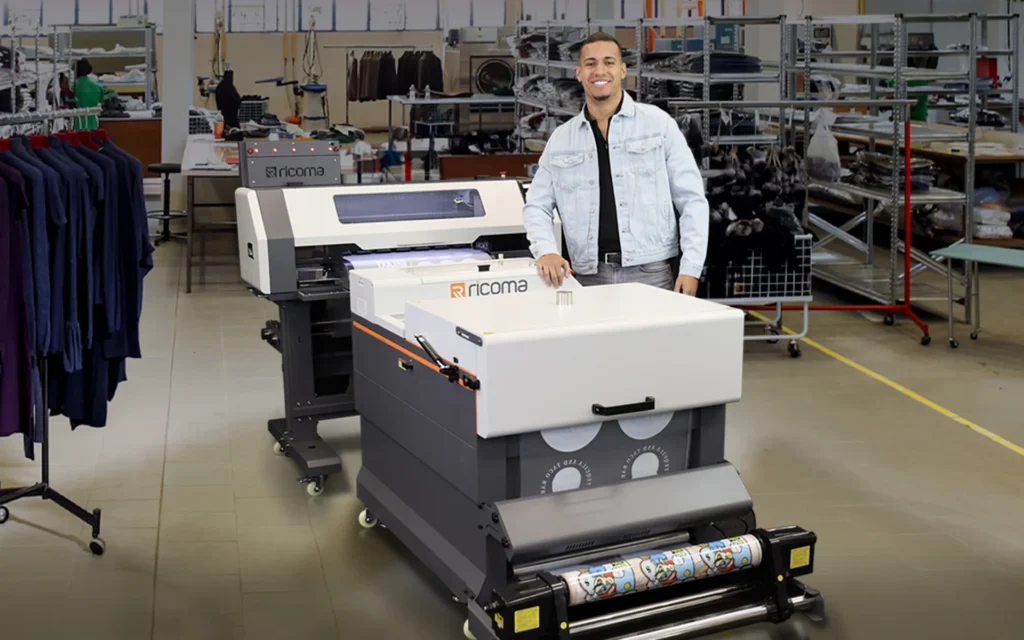
What is DTF Printing?
When considering DTF vs screen print transfers, the key difference is that DTF uses special printers to create designs on film before transferring to fabric, while screen printing directly applies ink through screens.
What sets DTF apart from other digital printing methods is its unique two-step process. First, the design is printed onto a special film, and then a powdered adhesive is applied. This combo allows for vibrant, detailed prints that can be transferred onto a wide variety of fabrics.
The DTF Printing Process

Using specialized software, you’ll prepare your artwork for printing.
Once your design is printed onto the film (which looks a bit like a clear sticker), it’s time for the magic powder. A hot-melt adhesive powder is sprinkled over the wet ink. This powder is the secret sauce that helps your design stick to the fabric later on.
(Our large-scale, roll-to-roll DTF printers including the Revel 1202 and Revel 2402 do this automatically for you so you can complete bulk orders with ease!)
Next, the film goes through a curing process, usually in a special oven, which melts the powder and bonds it with the ink. At this point, your transfer is ready to go!
The final step is applying the transfer to your fabric. This is done using a heat press which is a super-hot, super-strong iron. The heat and pressure activate the adhesive, transferring your design from the film to the fabric. Peel off the film, and voila! You’ve got a professional-looking print.
Advantages of DTF Printing
One of the biggest advantages of DTF is its versatility when it comes to fabrics. Unlike some other printing methods that can be picky, DTF is like that easy-going friend who gets along with everyone. Cotton, polyester, blends, even those tricky moisture-wicking fabrics – DTF can handle them all with ease.
DTF can also handle gradients, fine lines, and complex designs that might give other methods a headache.
DTF printing also produces minimal waste compared to some other methods. The process is efficient, and you only print what you need. Plus, many DTF inks are water-based and more environmentally friendly than traditional plastisol inks. It’s a win-win for your business and Mother Earth!
Comparison: Screen Printing vs. DTF
Print Quality and Detail
Screen printing are both meant to produce bold, vibrant colors, however, DTF shines when it comes to intricate details and photorealistic images. It can handle fine lines and gradients with ease, making it perfect for complex designs. On textured fabrics, screen printing can sometimes struggle to maintain detail, while DTF tends to perform better across various fabric textures.
Color Options and Vibrancy
DTF provides a wider range of color options and can produce more subtle color variations. When it comes to printing on dark fabrics, screen printing often requires an underbase, while DTF can typically print directly on dark materials without this extra step.
Durability and Wash Resistance
Both methods resist cracking well, but proper care (like washing inside out and avoiding high heat) can help extend the life of any printed garment.
Fabric Versatility
DTF can print on a wide range of materials, including cotton, polyester, blends, and even challenging fabrics like nylon or moisture-wicking materials. Screen printing, while versatile, can sometimes struggle with very stretchy fabrics or synthetic materials.
Production Speed and Efficiency
Both screen printing and DTF are used for bulk orders, but DTF tends to have a shorter set-up time and is easier to learn, which makes it great for business owners just starting out.
Cost Considerations
DTF tends to have lower setup costs, making it more cost-effective for small runs or one-off prints. Ongoing costs for DTF include film and adhesive powder, and for screen printing, screen reclamation and storage.
Why DTF Printing is Best for a Long-Lasting Business
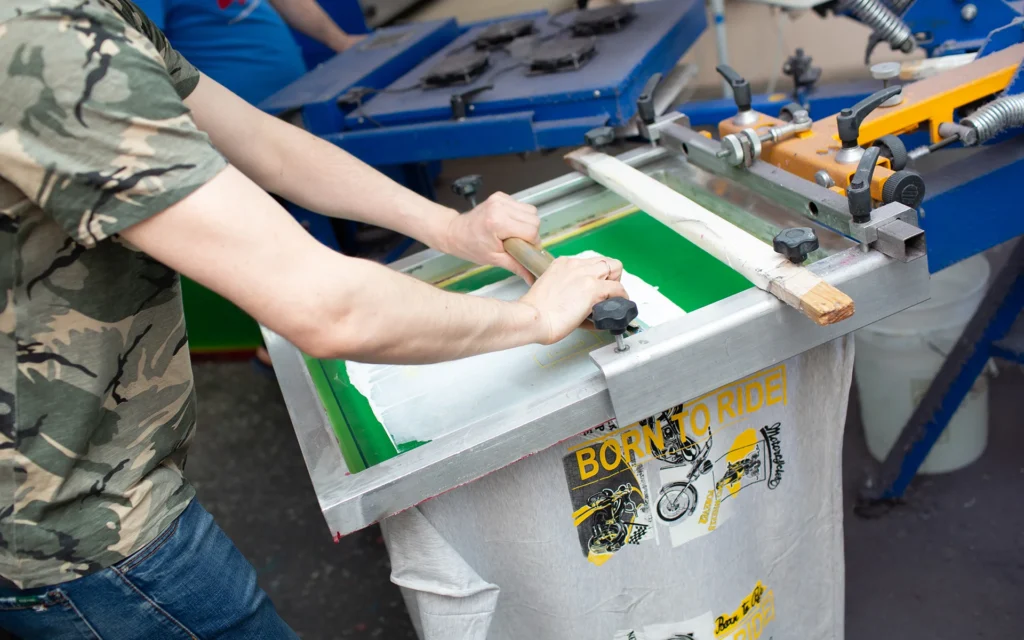
Versatility and Adaptability
DTF printing offers unparalleled versatility, allowing businesses to handle a wide range of orders efficiently. It can easily adapt to changing market trends, enabling you to quickly offer new designs or customize products.
DTF can also complement existing printing methods, filling gaps where other techniques might fall short.
Lower Setup Costs and Minimal Waste
Compared to traditional methods, DTF has significantly lower setup costs. There’s no need for expensive screens or lengthy setup processes. This reduction in initial investment makes it easier for new businesses to enter the market. (Plus, with our financing options, there’s a way for everyone to get started).
Scalability for Growing Businesses
DTF printing grows with your business. It’s equally suitable for small, custom orders and larger production runs. This scalability allows you to expand your customer base without significant changes to your equipment or processes.
Start Your DTF Journey with Ricoma!
Our equipment features advanced technology for precise, vibrant prints and user-friendly interfaces for easy operation.
Our DTF printers, like our roll-to-roll Revel 1202 and Revel 2402 are designed to help you produce professional-quality prints efficiently, whether you’re just starting out or looking to expand your existing printing business.
Explore all our DTF printers today!
